Solar Lighting Tax Credit Guide: U.S. Federal & State Incentives
For homeowners looking to illuminate their outdoor spaces sustainably, solar lighting offers an eco-friendly and cost-effective solution. In 2025, federal and state incentives make installing solar-powered lamps even more appealing by reducing upfront costs. This comprehensive guide details the federal Residential Clean Energy Credit, state-specific subsidies, and step-by-step instructions for claiming tax credits, helping you maximize savings. With practical tools like a state policy comparison table and an application flowchart, we’ll ensure you’re equipped to navigate the financial benefits of solar lighting solutions.
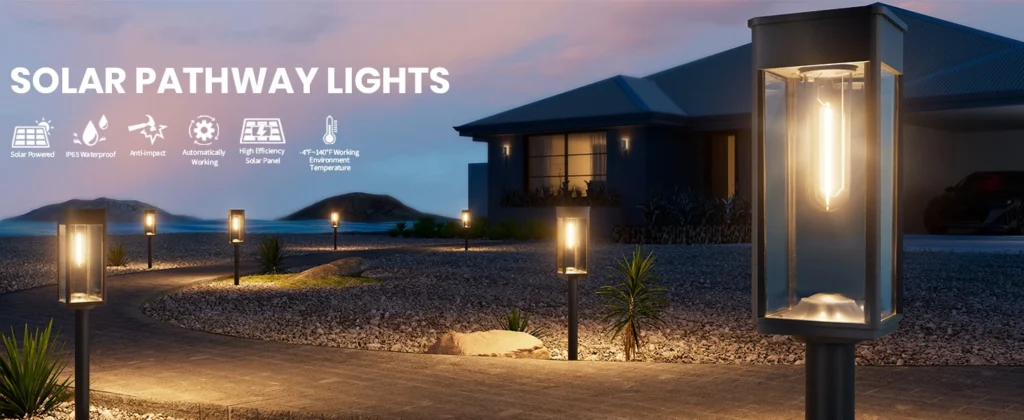
Understanding the Federal Residential Clean Energy Credit
The federal Residential Clean Energy Credit, also known as the solar tax credit or Section 25D, allows homeowners to deduct 30% of the cost of qualifying solar lighting systems installed by December 31, 2025. This nonrefundable credit applies to solar-powered lamps that meet specific standards, offering significant savings for urban and suburban homeowners.
Eligibility for the Federal Tax Credit
To qualify for the 30% federal tax credit, your solar lighting system must meet the following criteria:
- Installation Deadline: The system must be installed between January 1, 2022, and December 31, 2025.
- ENERGY STAR Certification: Solar-powered lamps must meet ENERGY STAR standards or be certified by the Solar Rating Certification Corporation for solar water heaters or comparable entities.
- Residential Use: The system must be installed at your primary or secondary residence in the U.S., though it doesn’t need to be your primary home.
- Ownership: You must own the solar lighting system outright; leased systems do not qualify.
Eligible costs include the purchase price of the solar lighting equipment, labor for onsite preparation, assembly, and installation, as well as wiring or piping to connect the system to your home. Traditional structural components, like standard roofing materials, do not qualify.
How the Federal Tax Credit Works
The credit reduces your federal tax liability dollar-for-dollar. For example, if you spend $2,000 on a qualifying solar lighting system, you can claim a $600 credit. If your tax liability is $1,500, the credit reduces it to $900. If the credit exceeds your tax liability, you can carry forward the unused portion to future tax years, but it’s nonrefundable, meaning you won’t receive a refund if it exceeds your taxes owed.
To claim the credit, file IRS Form 5695 with your tax return, ensuring you include manufacturer certifications and detailed receipts. Note that subsidies or rebates, such as utility company incentives, may reduce the eligible cost for calculating the credit, so subtract these from your total expenses before applying the 30% rate.
State-Level Solar Lighting Incentives in 2025
In addition to federal credits, many states offer subsidies, rebates, or tax exemptions for solar lighting solutions, particularly for outdoor systems like solar wall lights, solar pillar lamps, or solar string lights. Below, we highlight incentives in key states, focusing on California and New York, which have robust programs.
California: Generous Solar Incentives
California leads in renewable energy adoption, offering multiple incentives for solar lighting:
- Property Tax Exemption: Installing solar-powered lamps increases your property value, but California exempts this added value from property taxes for 15 years, saving hundreds annually.
- Sales Tax Exemption: No state sales tax (approximately 7–9%) applies to solar lighting equipment, reducing upfront costs.
- Local Utility Rebates: Some California utilities, like Pacific Gas and Electric, offer rebates for installing solar lighting solutions, though availability varies by region. These rebates are subtracted from the system cost before calculating the federal tax credit.
Homeowners should contact local utilities or solar installers to confirm available rebates, as programs like the NY-Sun equivalent have been depleted in some areas.
New York: Comprehensive Solar Support
New York’s incentives make solar lighting highly affordable:
- NY State Income Tax Credit: Homeowners can claim 25% of their solar lighting system cost, up to $5,000, as a state tax credit, combinable with the federal credit.
- Property Tax Exemption: Like California, New York exempts the added property value from solar-powered lamps for 15 years in most areas.
- Sales Tax Exemption: No state sales tax (around 4%) applies to solar lighting purchases.
- Net Metering: If your solar lighting system includes battery storage, excess energy sent to the grid earns bill credits at retail rates, offsetting electricity costs.
New York’s NY-Sun rebates are limited, especially for Long Island residents, but income-qualified households may still access upfront incentives.
Other States with Notable Incentives
- Massachusetts: Offers rebates up to $3,200 for solar lighting or efficient lighting through utility programs.
- Nevada and Georgia: Provide rebates for low-income households adopting solar-powered lamps.
- Florida: Exempts solar lighting systems from sales tax and property tax increases, enhancing affordability.
Check with your state’s energy office or local utility for specific programs, as incentives vary widely and may phase out faster than federal credits.
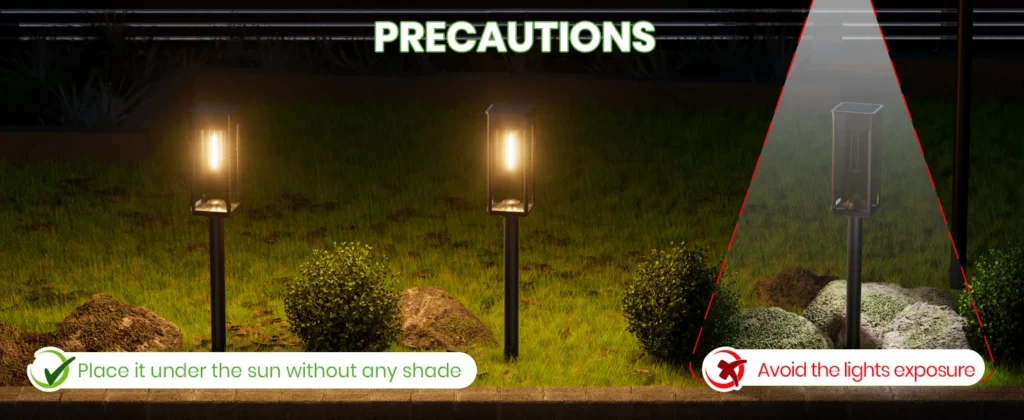
Application Materials: What You Need to Claim Incentives
To maximize savings on solar lighting, proper documentation is critical. Below is a checklist of required materials for federal and state incentives:
Federal Tax Credit Documentation
- Purchase Invoices: Detailed receipts showing the cost of solar-powered lamps, including equipment and labor.
- Manufacturer Certifications: Proof that your solar lighting meets ENERGY STAR or equivalent standards. Obtain these from the manufacturer or retailer.
- IRS Form 5695: Complete this form, selecting “qualified solar electric property costs,” and attach it to your federal tax return.
- Residential Energy Efficient Property Credit Limit Worksheet: Use this IRS worksheet to verify your tax liability and credit eligibility.
- Proof of Installation: Contracts or installer statements confirming the system was installed by December 31, 2025.
State Incentive Documentation
- Proof of Purchase: Receipts for solar lighting solutions, clearly listing equipment and installation costs.
- Utility Rebate Applications: Forms from your local utility, often requiring system specifications and installer details.
- State Tax Forms: For states like New York, complete state-specific tax credit forms, such as Form IT-255 for the NY State Income Tax Credit.
- Property Tax Exemption Forms: Submit these to your local tax assessor to exclude solar lighting value from property taxes.
Consult a tax professional to ensure accuracy, especially if combining federal and state incentives.
2025 State Solar Incentive Comparison Table
The following table compares key state incentives for solar lighting in 2025, helping you identify the best opportunities:
| State | Tax Credit | Property Tax Exemption | Sales Tax Exemption | Rebates |
|---|---|---|---|---|
| California | None | Yes (15 years) | Yes (~7–9%) | Utility-specific, varies |
| New York | 25% of cost, up to $5,000 | Yes (15 years) | Yes (~4%) | NY-Sun (limited availability) |
| Massachusetts | None | Varies by locality | Yes | Up to $3,200 via utilities |
| Florida | None | Yes | Yes | None |
| Nevada | None | Yes | Yes | Rebates for low-income households |
Note: Always verify with local authorities, as programs may change or deplete.
Tax Credit Application Flowchart
To streamline the process, follow this 2025 Tax Credit Application Flowchart for solar lighting:
- Purchase and Install: Buy and install an ENERGY STAR-certified solar lighting system by December 31, 2025.
- Gather Documentation: Collect invoices, manufacturer certifications, and installation contracts.
- Calculate Eligible Costs: Subtract any rebates or subsidies from the total cost to determine the federal credit base.
- Complete IRS Form 5695: Enter qualified costs and calculate the 30% credit. Use the Residential Energy Efficient Property Credit Limit Worksheet.
- File Federal Taxes: Attach Form 5695 to your Form 1040 tax return.
- Apply for State Incentives: Submit state-specific forms (e.g., NY’s IT-255) and utility rebate applications.
- Consult a Tax Professional: Ensure accuracy and maximize combined federal and state savings.
Tips to Maximize Your Savings
- Act Quickly: The federal Residential Clean Energy Credit expires December 31, 2025. Installation timelines can take 2–4 months, so plan ahead to meet the deadline.
- Combine Incentives: Pair federal credits with state tax credits, exemptions, and rebates for maximum savings. For example, a $2,000 solar lighting system in New York could yield a $600 federal credit and up to $500 state credit.
- Choose Efficient Systems: Opt for compact, high-efficiency solar wall lights or solar string lights to qualify for ENERGY STAR standards and reduce costs.
- Document Everything: Keep detailed records to simplify audits and ensure eligibility.
- Check Local Utilities: Some utilities offer additional rebates for solar-powered lamps, but funds may be limited.
Conclusion: Seize Solar Lighting Savings in 2025
With the federal Residential Clean Energy Credit set to expire after December 31, 2025, now is the time to invest in solar lighting solutions for your home. By combining the 30% federal tax credit with state incentives like those in California and New York, homeowners can significantly reduce the cost of solar wall lights, solar pillar lamps, and other outdoor systems. The provided 2025 State Solar Incentive Comparison Table and Tax Credit Application Flowchart simplify the process, ensuring you maximize savings while enhancing your outdoor space sustainably.
Don’t miss this opportunity to lower your energy costs and contribute to a greener future. Contact your local solar installer, verify eligibility, and start your solar lighting project today to lock in these valuable incentives before they disappear.


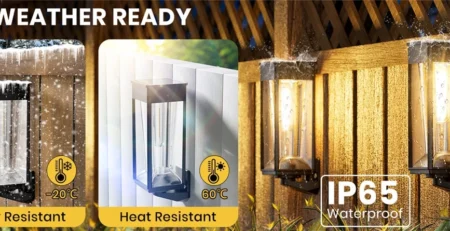

-4-2-450x231.webp)

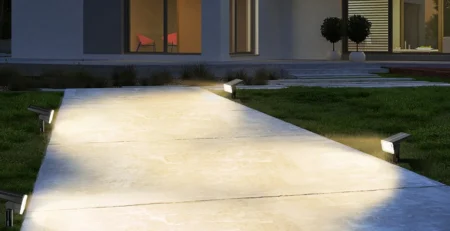

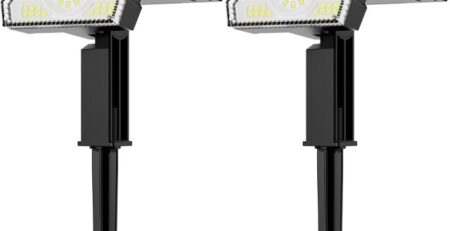
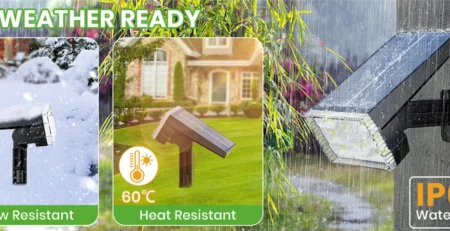
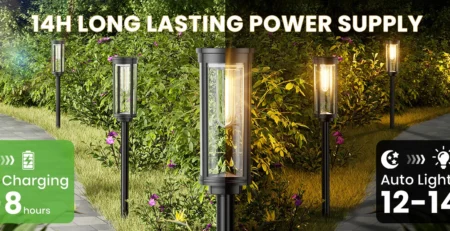
Leave a Reply